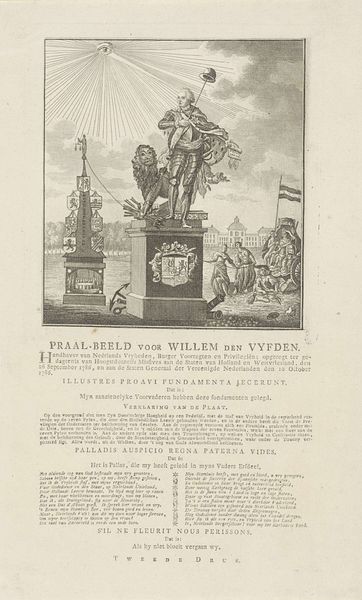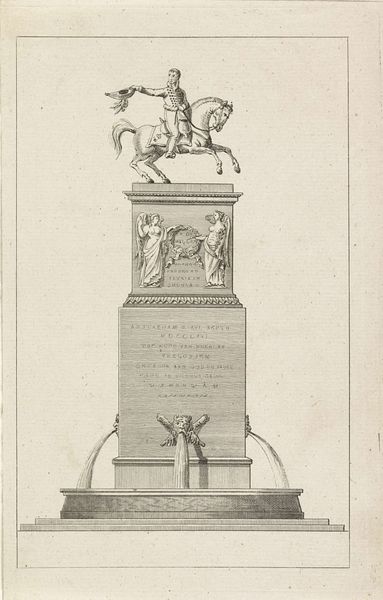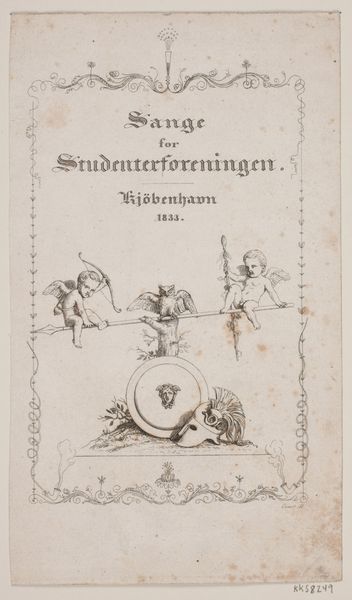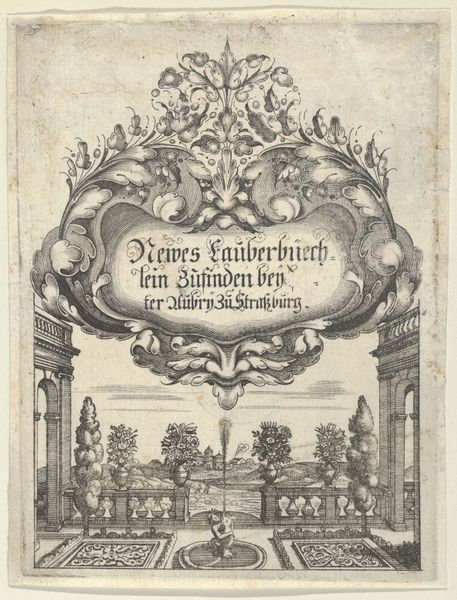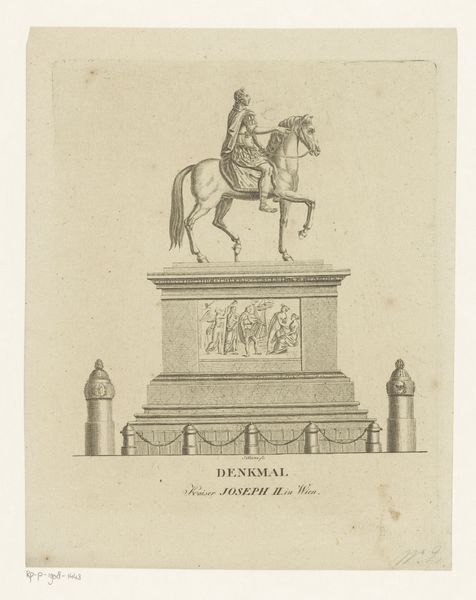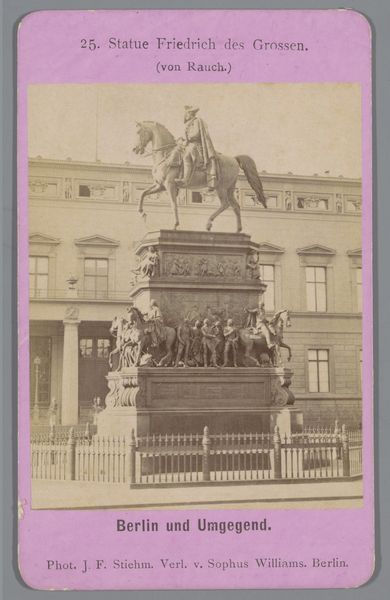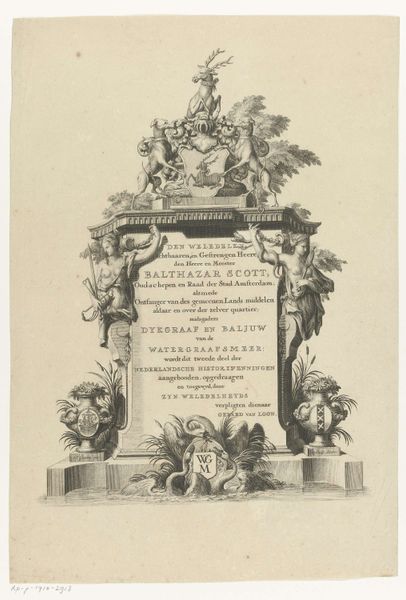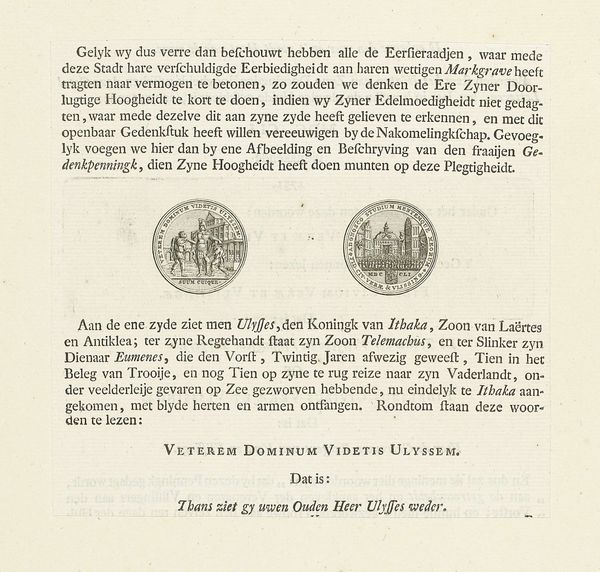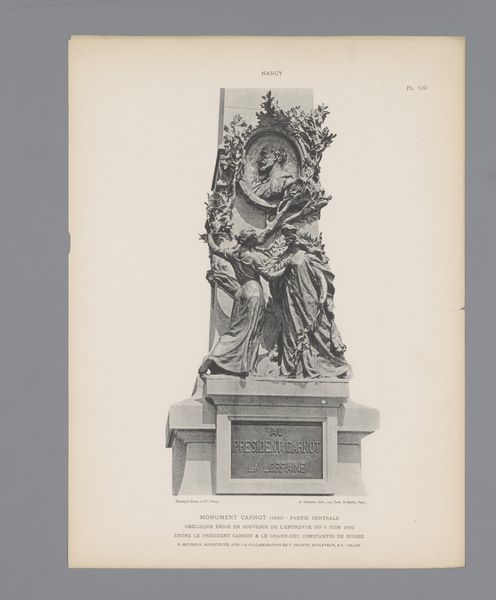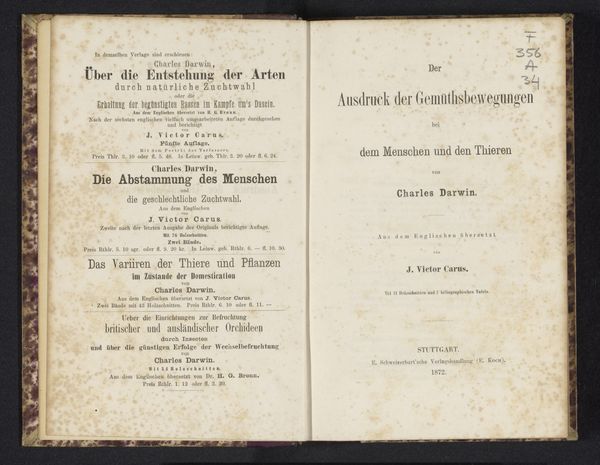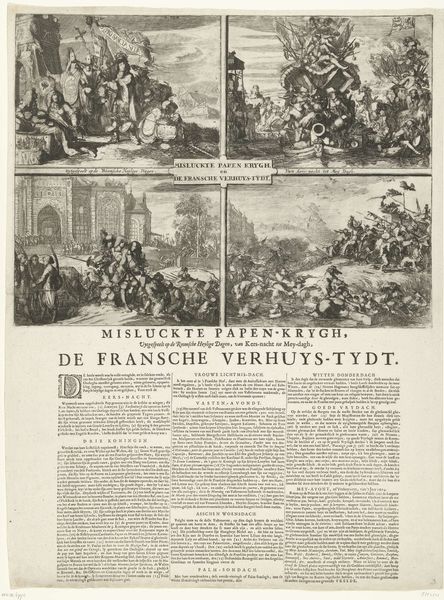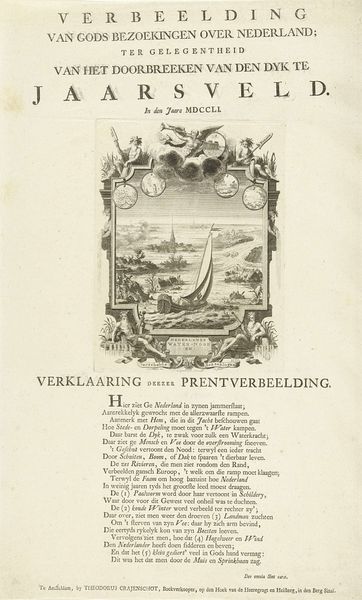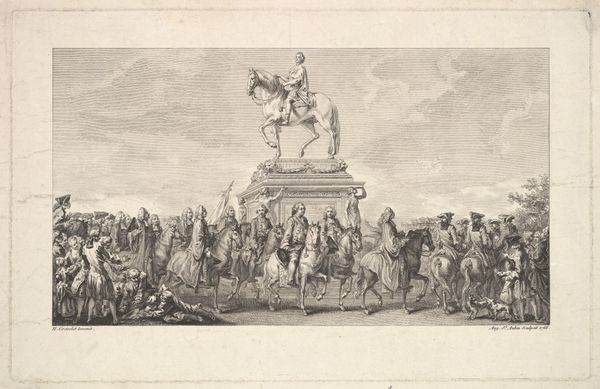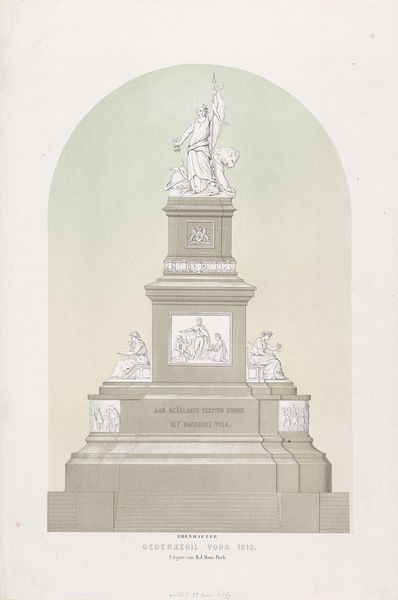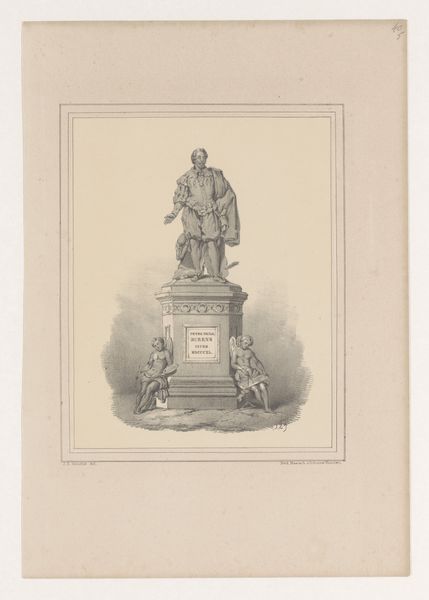
Dimensions: height 630 mm, width 925 mm
Copyright: Rijks Museum: Open Domain
Curator: This engraving captures the unveiling of the equestrian statue of Frederick the Great in Berlin, on May 31, 1851. Editor: The composition immediately strikes me as intensely hierarchical. Frederick is literally elevated above the masses. It's all in gray hues, giving a somber air of authority and power. Curator: Indeed, these commemorative prints served to reinforce state power through imagery. Statues like this one were deliberately placed in the public sphere to shape collective memory and national identity. Notice the artist’s engagement with German Expressionism, which, even this early on, highlights national themes and a sense of shared experience. Editor: Absolutely. Look at the positioning of Frederick himself, eternally gazing forward. And the bas-reliefs at the monument's base depicting scenes and figures representative of his reign. They act almost like visual footnotes, underscoring his perceived virtues. Curator: Yes, and it's crucial to understand how meticulously crafted this iconography was. The specific date chosen for the unveiling and the circulation of prints like this all worked towards forging a sense of shared national heritage rooted in Prussian strength and leadership. It helped to visually connect current events with past glories. Editor: You're right. There is almost a spiritual elevation being presented here. It reminds me of older traditions depicting rulers as saints. Though subtly done, the statue communicates specific political aims and imbues the king with something akin to timeless virtue, a leader appointed by fate. Curator: Considering how perceptions of Frederick have shifted throughout German history, from national hero to a figure questioned for his role in Prussian militarism, such imagery had very concrete ideological purposes. The print solidifies one specific narrative meant to sway viewers. Editor: It makes you think about the shifting meaning of monuments. This image acts almost as a historical snapshot, freezing a particular moment of public celebration and offering us insight into the values the Prussian state sought to project. It's fascinating how objects like this are constantly renegotiated and reinterpreted. Curator: Indeed, understanding the historical context surrounding this artwork provides us with essential insight into how visual imagery functions to construct national narratives. Editor: And deciphering the iconographic language grants insight into the enduring emotional and psychological power that such images wield over time, something beyond merely their artistic quality.
Comments
No comments
Be the first to comment and join the conversation on the ultimate creative platform.
